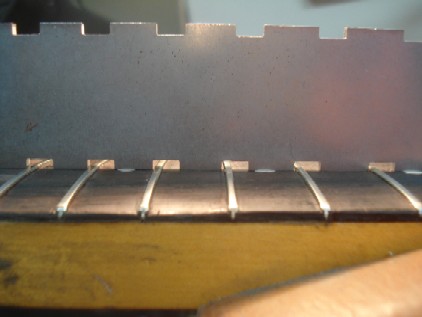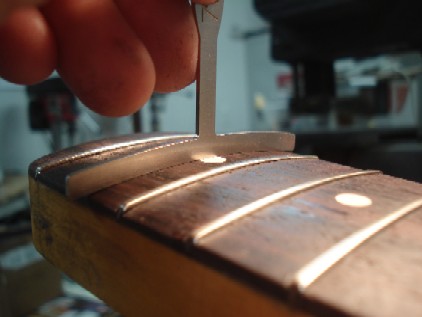The story: I got an email from a guy who was flying in from Canada with a Fender Precision bass that had, in his words, "a ski jump" for a fretboard. He's only going to be in town for a few days, can I help? Sure thing! Let's take a look...
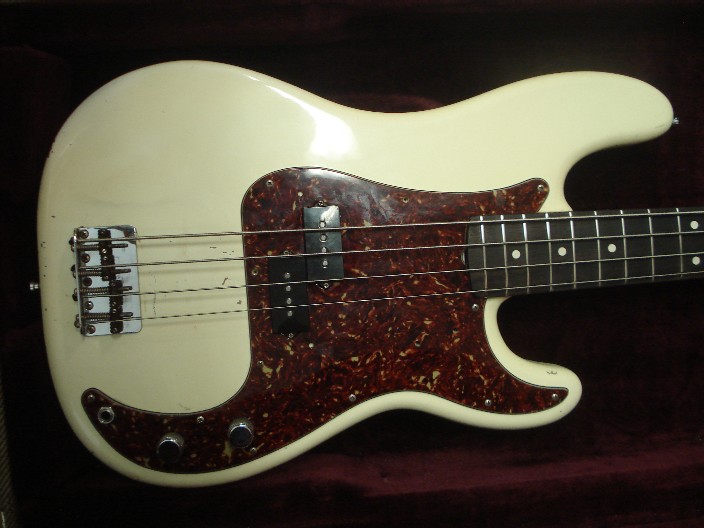
The first thing I do, after making sure it's all tuned up, is check the amount of relief (lots and lots.... and lots) and see how bad the hump is. As the photo at right shows, it's pretty bad. In order for the strings to clear that high spot, the action had to be set very high, which makes playing it not so much fun. "Well, my hands are getting really strong," the owner joked, when I asked how he managed to play it with such high action.
In the next two photos below, I'm checking the radius of the fretboard. The photo on the left shows the board has a vintage 7.25" radius at the 11th fret. But up at the 18th fret... we've got a bit of a problem. The light on the sides shows that the radius is much more curved than it should be. I'm gonna need to do something about this...

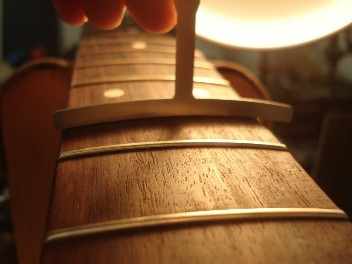
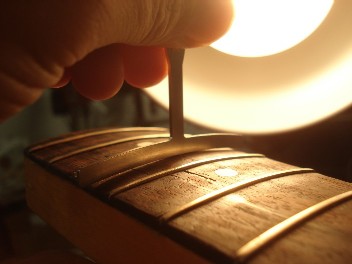
Material from the fretboard must be removed. To do this, I've got to remove the last five frets, sand away the "hump" and restore the correct radius to the board. Then, install new frets and level them to the height of the existing frets. While I'm at it, I need to fill a small crack in the center of the fingerboard (I think moisture got into the crack and caused the wood to swell, which we don't want to happen again.).
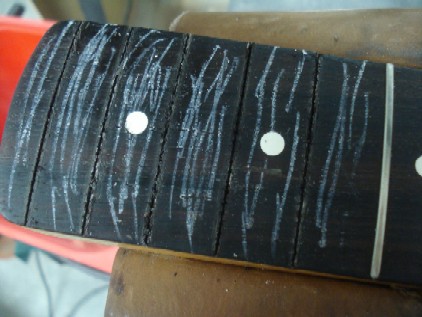
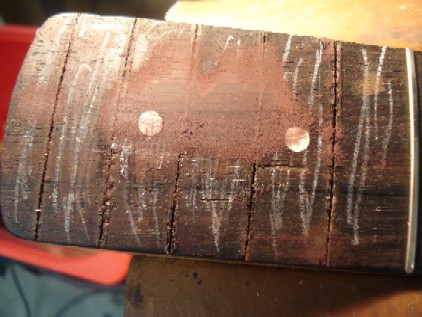
After leveling the surface, new frets are installed, leveled, and crowned.
I then go back and double-check everything with a straightedge and radius gauge. Everything looks like it should!
Finish up with a proper setup, and this one is ready to go.
